Fish Kills in Etang de St Jean
Recently we got news of a large fish-kill” in Etang de St Jean. “A mass mortality of fish in the salt pond is sadly not new; these events have been a regular occurrence for well over a decade. An important difference today is that we are seeing a widening awareness of this ecological problem.
Fish kills are a symptom of an ecosystem in trouble. Fish die because the oxygen they need to survive has been depleted. In other words, they suffocate. Oxygen depletion is associated with high nutrient levels (usually nitrogen and phosphorous), which trigger the growth of microscopic plants. It is the same response you get when you add fertilizer to your garden i.e. more roses and veggies.
In salt ponds, higher salinity and water temperatures exacerbate the effect of oxygen depletion; hotter, saltier water has less available oxygen. Microscopic plant blooms in the salt pond (responsible for the dark green color) use up the oxygen, and animals like fish die. Fish are often only one of many species affected but, because they float to the surface in large groups and smell, they tend to be the most visible.
Where do these nutrients come from?
The St Jean Salt pond is part of a 418 acre drainage system or watershed. Rainwater brings soil nutrients from the hillsides and carries runoff from roads directly into the pond. Human activities have increased the supply of nutrients. Septic tanks and garden fertilizers add extra loads to the system, as does cutting down vegetation and mangrove buffers that absorb nutrients. Strong winds can set up circulation patterns in shallow ponds and lakes which draw nutrients from the bottom to the surface, and in effect add “fuel to the fire”. In combination all these events can create a perfect storm that “overdoses” the system with nutrients, and results in fish kills. In the St Jean salt pond the lack of “flushing” i.e. an exchange of water from the pond to the bay makes the system stagnant and more prone to oxygen depletion, and accompanying fish kills.
In the past, it was often possible to identify a single point source of pollution, but not anymore. Today, sources of pollution are harder to pinpoint and tend to come from a wide array of diffuse activities and places.
What can be done?
There have been several suggestions, including rapidly opening the pond to the bay. A “quick fix” of flushing the nutrient-rich stagnant water into the bay would have disastrous consequences for the reefs, turtles, fish and water in the bay itself, and would not solve the problem long term.
Ultimately the solution lies in restoring the ecosystem to health which includes re-establishing the link between the sea and pond (which will help with flushing and water movement), reducing nutrient overload, restoring the mangrove and plant buffer around the sides of the pond, and creating habitats for invertebrates, fish and birds that are the biological components which keep the system healthy. But this has to be done carefully. Such an effort needs to be science-based, and take into account that the ecological system is more fragile today than before and that human activities are and will continue to be more pronounced. We can’t go back to past times but we can build a future which includes resilient and healthy ecosystems.
Are there any scientific studies available?
In 2010, we (some of my grad students and I) participated in a hydrodynamic and geophysical study of the salt pond and that included work in St Jean Bay. Engineers and hydrologists from Ocean Earth Technologies conducted the study on sediments bathymetry, bay currents, sea surface waves, watershed delineation and more. Their data were then used to develop models of the system and explore ways to re-link the bay and pond. Several models looked at water-flow in the pond; one looked at how restoring the reef would change the speed and force of the water in St Jean and help sand stay on the beach. The models were used to forecast exchange of water between the bay and pond under many different environmental conditions. The study included options for biological restoration of fish and bird habitats, and recovering the mangroves around the pond. The study was a scientific and engineering framework for restoring the pond and as part of the larger St Jean Bay ecosystem. This study like others awaits full discussion on implementation. But it offers another part to the overall ecological and technical solutions for the troubled ecosystem of St. Jean bay and salt pond.
Science and the Environment
The fish kills, which have catalyzed the concern for the salt pond, highlight the importance of science and the environment. On St Barths, as we continue to discuss the challenges facing our natural world, it is useful to look at both. Science is a rigorous process; it is a formal and unbiased way of getting to the truth. It distinguishes fact from belief, truth from opinion. It teaches us how our ecosystems work when at times we may believe or want to believe that they work differently. It is a unique human endeavor and a powerful way of knowing. Studies show that when science and scientists are involved in environmental decisions that the results are better for the ecosystem and the goals of the people involved. We would never go into surgery without first having consulted trained doctors and surgeons, and doing surgery on our environment should also be science-based. Scientific studies are a vital part how we understand and make decisions. But science itself has no independent values or judgments. Only humans have those.
The fate of our environment is a reflection of the values that we citizens place on it. Government policies, laws, and actions such as creating reserves as well as individual activities mirror societal opinions on a healthy environment and the ecosystem services it provides. Environmental values are based a wide range of factors and priorities. Citizens‘ access to and understanding of science helps to shape those values. The old idea was that we had to choose between prosperity and environment, and that false dichotomy polarized communities. What is true is that all of us share the environment. We all have a role to play in shaping the type of environment we want for ourselves, our children and into the future. Participating is a gift and a responsibility.
Deborah Brosnan
email: mailto:[email protected]
Main Lab Page http://brosnancenter.com
Recently we got news of a large fish-kill” in Etang de St Jean. “A mass mortality of fish in the salt pond is sadly not new; these events have been a regular occurrence for well over a decade. An important difference today is that we are seeing a widening awareness of this ecological problem.
Fish kills are a symptom of an ecosystem in trouble. Fish die because the oxygen they need to survive has been depleted. In other words, they suffocate. Oxygen depletion is associated with high nutrient levels (usually nitrogen and phosphorous), which trigger the growth of microscopic plants. It is the same response you get when you add fertilizer to your garden i.e. more roses and veggies.
In salt ponds, higher salinity and water temperatures exacerbate the effect of oxygen depletion; hotter, saltier water has less available oxygen. Microscopic plant blooms in the salt pond (responsible for the dark green color) use up the oxygen, and animals like fish die. Fish are often only one of many species affected but, because they float to the surface in large groups and smell, they tend to be the most visible.
Where do these nutrients come from?
The St Jean Salt pond is part of a 418 acre drainage system or watershed. Rainwater brings soil nutrients from the hillsides and carries runoff from roads directly into the pond. Human activities have increased the supply of nutrients. Septic tanks and garden fertilizers add extra loads to the system, as does cutting down vegetation and mangrove buffers that absorb nutrients. Strong winds can set up circulation patterns in shallow ponds and lakes which draw nutrients from the bottom to the surface, and in effect add “fuel to the fire”. In combination all these events can create a perfect storm that “overdoses” the system with nutrients, and results in fish kills. In the St Jean salt pond the lack of “flushing” i.e. an exchange of water from the pond to the bay makes the system stagnant and more prone to oxygen depletion, and accompanying fish kills.
In the past, it was often possible to identify a single point source of pollution, but not anymore. Today, sources of pollution are harder to pinpoint and tend to come from a wide array of diffuse activities and places.
What can be done?
There have been several suggestions, including rapidly opening the pond to the bay. A “quick fix” of flushing the nutrient-rich stagnant water into the bay would have disastrous consequences for the reefs, turtles, fish and water in the bay itself, and would not solve the problem long term.
Ultimately the solution lies in restoring the ecosystem to health which includes re-establishing the link between the sea and pond (which will help with flushing and water movement), reducing nutrient overload, restoring the mangrove and plant buffer around the sides of the pond, and creating habitats for invertebrates, fish and birds that are the biological components which keep the system healthy. But this has to be done carefully. Such an effort needs to be science-based, and take into account that the ecological system is more fragile today than before and that human activities are and will continue to be more pronounced. We can’t go back to past times but we can build a future which includes resilient and healthy ecosystems.
Are there any scientific studies available?
In 2010, we (some of my grad students and I) participated in a hydrodynamic and geophysical study of the salt pond and that included work in St Jean Bay. Engineers and hydrologists from Ocean Earth Technologies conducted the study on sediments bathymetry, bay currents, sea surface waves, watershed delineation and more. Their data were then used to develop models of the system and explore ways to re-link the bay and pond. Several models looked at water-flow in the pond; one looked at how restoring the reef would change the speed and force of the water in St Jean and help sand stay on the beach. The models were used to forecast exchange of water between the bay and pond under many different environmental conditions. The study included options for biological restoration of fish and bird habitats, and recovering the mangroves around the pond. The study was a scientific and engineering framework for restoring the pond and as part of the larger St Jean Bay ecosystem. This study like others awaits full discussion on implementation. But it offers another part to the overall ecological and technical solutions for the troubled ecosystem of St. Jean bay and salt pond.
Science and the Environment
The fish kills, which have catalyzed the concern for the salt pond, highlight the importance of science and the environment. On St Barths, as we continue to discuss the challenges facing our natural world, it is useful to look at both. Science is a rigorous process; it is a formal and unbiased way of getting to the truth. It distinguishes fact from belief, truth from opinion. It teaches us how our ecosystems work when at times we may believe or want to believe that they work differently. It is a unique human endeavor and a powerful way of knowing. Studies show that when science and scientists are involved in environmental decisions that the results are better for the ecosystem and the goals of the people involved. We would never go into surgery without first having consulted trained doctors and surgeons, and doing surgery on our environment should also be science-based. Scientific studies are a vital part how we understand and make decisions. But science itself has no independent values or judgments. Only humans have those.
The fate of our environment is a reflection of the values that we citizens place on it. Government policies, laws, and actions such as creating reserves as well as individual activities mirror societal opinions on a healthy environment and the ecosystem services it provides. Environmental values are based a wide range of factors and priorities. Citizens‘ access to and understanding of science helps to shape those values. The old idea was that we had to choose between prosperity and environment, and that false dichotomy polarized communities. What is true is that all of us share the environment. We all have a role to play in shaping the type of environment we want for ourselves, our children and into the future. Participating is a gift and a responsibility.
Deborah Brosnan
email: mailto:[email protected]
Main Lab Page http://brosnancenter.com
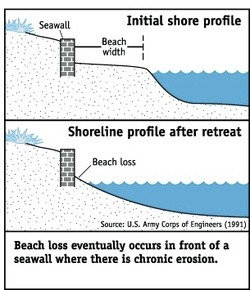
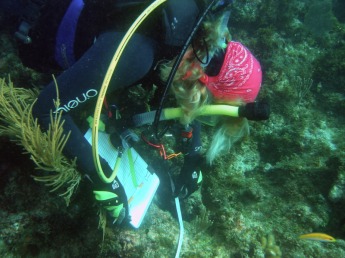
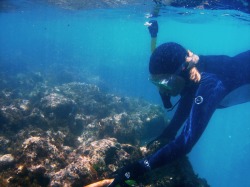
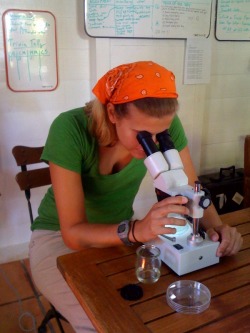
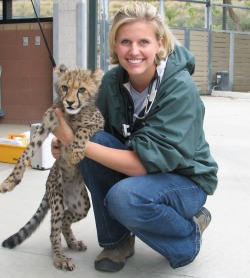
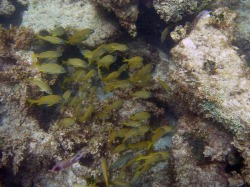
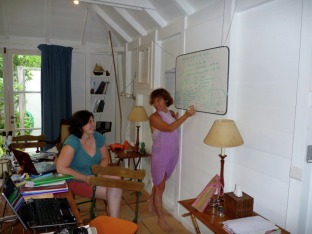
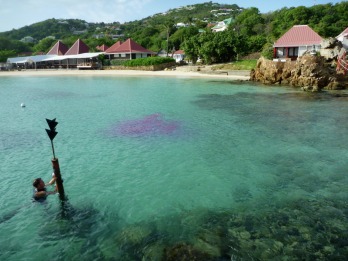
 RSS Feed
RSS Feed